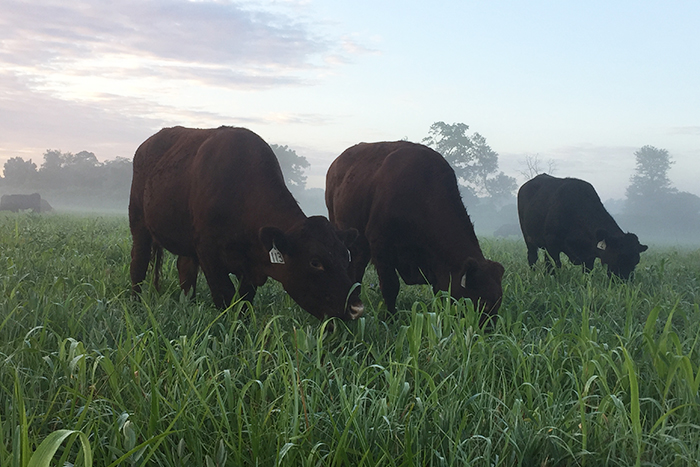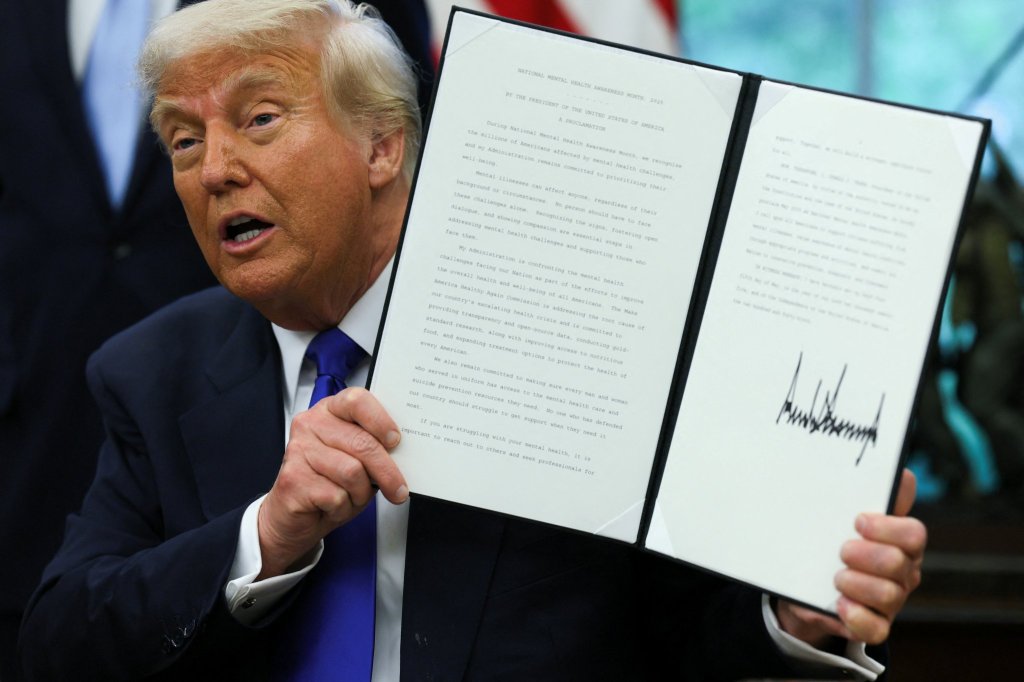A Wall Street Businessman Is Bringing Cattle Ranching to the Hamptons

People who go to business school are different from you and me. If you graduate from a regular college and find yourself in the Hamptons today, you might think of becoming a plumber or a merchant or an accountant—or if you think of going into business for yourself, opening a landscaping business or a limousine service.
People who go to business school and find themselves in the Hamptons think much bigger—way out of the box, sometimes. For example, consider Stephen Skrenta, who went to Wharton and now finds himself in the Hamptons. If, in the next few years, you see a whole bunch of cattle ranches on the East End, the industry rivaling in size the winery business that sprang up here 20 years ago, let me just tell you, it was him.
Skrenta grew up in suburban Long Island and never even got near enough to touch a live cow in that time. After Wharton (at the University of Pennsylvania) he got work on Wall Street with a mergers and acquisitions firm, took further work in that field in London for six years and then retired at age 41.
Buy a house in the Hamptons? Why not Amagansett, for his wife and children. He moved in three years ago—no local man, he—and began to think about what he wanted to do with the rest of his life.
“I wanted to start a business my family would be proud of and would help local farmers. Farmland soil where corn or sod or potatoes grow is often in poor shape because of pesticides and herbicides. I would help return those parcels of land to their natural health. And it would be with cattle. Nothing restores farmland like cattle does.”
Two weeks ago, his firm, Acabonac Farms, debuted. Cattle are now being raised on the rich grass in the Hamptons. And with the click of a mouse, you are now able to order 5 or 10 pounds of first-class butchered meat from entirely grass-fed cows, with no corn or other grain to fatten them up, delivered overnight to your home so you can have it for dinner the next night.
More and more cattle will appear in more and more pastures here as this business grows.
Skrenta asked me to help him move some cattle in the coming days before this story appears. He’s got some that have to be moved from Shelter Island and Manorville. I said I would see what I could do.
You can order from Acabonac Farms online at acabonacfarms.com. There are four different kinds of “boxes” to order and pay for. Prices range from $106 for five-and-a-quarter pounds of premium ground beef to $308 for just over 12 pounds of assorted premium ground beef and steaks. You can fill a “shopping cart,” check out and have it sent, packed in dry ice, for the next day for dinner. You can also see the story of this business, and how you can get employment as a farmhand on one of the farms. Skrenta, when away from Amagansett, spends time visiting local potato and vegetable farmers, talking about the benefits of leasing him some of their farmland for cattle.
“Yes, farmland in the Hamptons is successful,” he told me, “but it’s in soil made healthy by use of chemicals such as potassium, nitrogen and phosphorous and sometimes pesticides and herbicides. If I can show them that raising cattle can make more profit then they make now, they will come aboard. And nothing enriches farmland like natural fertilizer.”
Skrenta offers partnerships with those who lease him farmland for cattle on their land in the Hamptons. And of course, the farmers get funds from the leasing arrangements.
“I’ve traveled all over the world visiting places where cattle live on grass rather than grain. I’ve learned from farmers in Australia, New Zealand, Switzerland, Ireland, South Africa. Almost none of this is being done in America. In America they are brought to feedlots at maturity and get fat eating corn. The feedlot business is dominated nationally by four companies. Sometimes there’s a delay. Now here’s an opportunity for direct sale from farm to table, all in the community. I don’t think there’s another business like Acabonac Farms in America.”
Skrenta has created a company that has all this working together—purchase, grazing, transportation, sales, marketing and production. He currently visits farms in Tennessee and Vermont to choose the young cattle he wants to buy, and then arranges trucking them here for what he calls “finishing” on grass.
He described the three phases of livestock. In the first phase, the calf is with its mother prior to weaning, and lives on milk and grass. The next is adolescence, where the cattle puts on bone and muscle and is also on grass. The final phase is when Acabonac Farms intervenes. Skrenta buys just before the cattle are to be sold to the feedlot companies. They are then “finished” here.
“How old are they when they come?” I asked.
“Anywhere from 6 to 18 months. After that they live on Hamptons grass and gain another 250 pounds. And then they go off upstate to slaughterhouses. But what I’ve been trying to do is revive the slaughterhouse in Yaphank, which closed two years ago. If there is demand, I think I can get it re-opened.”
For many years, until 2015, the Yaphank facility was run by Cornell University for vocational purposes. Graduates would enter the med-tech industry.
“After it closed, they put it out for bid last year,” he continued. “I submitted the only bid. And I lost.”
Why? Because his bid was also for the leasing of the 175 acres of grassland that surround that facility, and that wasn’t part of the auction. Now they will re-auction. And they’ve put in the leasing of the grassland.
“If I don’t get it, somebody will,” Skrenta said. “It’s all good for the farmers.”
Suffolk County did award Skrenta grazing rights on the North Fork Preserve in Aquebogue.
Cattle raising here in the Hamptons has been done for centuries. Cattle were put out to pasture in Montauk in the summertime beginning around 1670. One series of pastures, consisting of 1,200 acres between Lake Montauk and the Lighthouse, changed its name from Third House to Deep Hollow Ranch about a hundred years ago. In the fall, a cattle drive would take the cattle herd from the ranch through town and off to the railroad station to be loaded onto cattle cars for the trip to Yaphank and elsewhere.
I told Skrenta my family had moved to Montauk in the mid-1950s when I was a teenager, just a year after the last cattle drive. After that, the cattle were picked up directly at the ranch by trucks.
Deep Hollow Ranch’s slogan then was “The Oldest Cattle Ranch in the United States” and the cattle ranching continues, now on a smaller scale under the direction of Pat and Cate Keogh.
“During the early years, I was there,” I told him, “The owner of the Deep Hollow Ranch, Bill Cooper, arranged for three buffalo to be brought out to the place. They grazed in a pasture adjacent to the driveway to the farmhouse you’d drive by. Hy Sobeloff was a famous Montauk poet back then. Cooper said he wanted the buffalo there to ‘inspire’ Sobeloff.”
My wife and I visited New Zealand about 20 years ago. At that time, we traveled the countryside, staying at farms. Near Queensland, we stayed at a farm where, the next morning, we were taken to a pasture to form a human chain with some of the ranchers and others to keep sheep being driven from one pasture to another from straying off to a third pasture.
Skrenta is moving 30 head from one pasture to another on Shelter Island at the end of September.
I think we could go help him out.
Moo.



